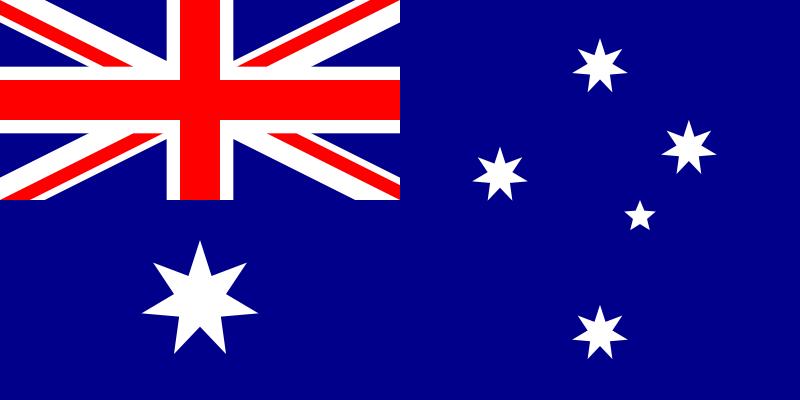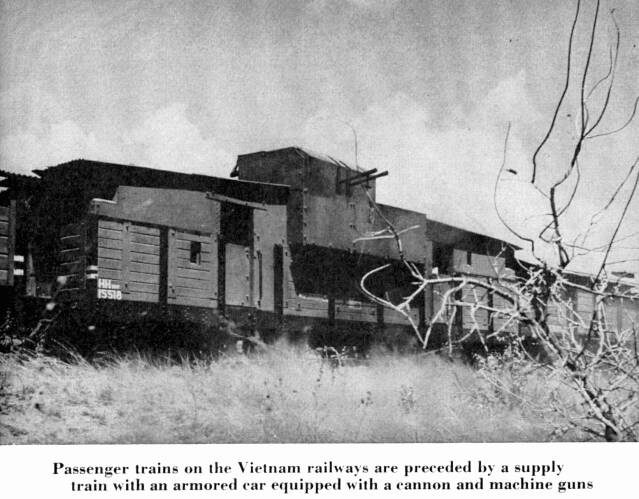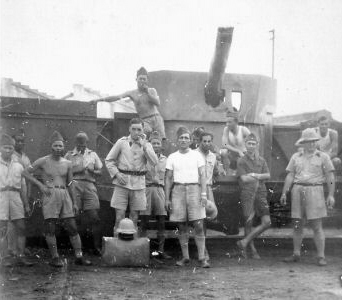RAILWAYS
AND THE MILITARY
















During the Various conflicts in Indochina the combatants came up with all sorts of interesting devices to protect their trains. This page will look at some of those and whether they were effective or not.





Steam Locomotives generally used the traditional
French classification system. A steam locomotive with a 2-8-2 wheel
arrangement is classified as 141 class, a locomotive with 4-6-2
wheel arrangement is classified as 231 class etc. To differentiate
between different locomotives with the same wheel arrangement, the
initial road number was added, e.g. 231-400 and 231-500. Some northern
locomotives of Chinese origin were also known by their Chinese
classification. e.g. 141 also known as ZL.
Diesel locomotives have a completely dfferent clasification system.
All diesel classes start with the letter 'D' (for diesel or possibly dau may for engine?) then a number which I believe is related to the locomotives power output. The third character defines Electric' (E) or hydraulic (H).
e.g. D5H class = Diesel + 500 hp + hydraulic.
Before 1975 in the south diesels used the French system , e.g. BB for Bo-Bo type locomotive then the initial road number. e.g. BB901 class.
In the North there appears to have been a mixture of different systems.
There is also a semi-official system where locomotives are classified by their country of origin. e.g D5H is also known as 'Ừc' (Australian).
Diesel locomotives have a completely dfferent clasification system.
All diesel classes start with the letter 'D' (for diesel or possibly dau may for engine?) then a number which I believe is related to the locomotives power output. The third character defines Electric' (E) or hydraulic (H).
e.g. D5H class = Diesel + 500 hp + hydraulic.
Before 1975 in the south diesels used the French system , e.g. BB for Bo-Bo type locomotive then the initial road number. e.g. BB901 class.
In the North there appears to have been a mixture of different systems.
There is also a semi-official system where locomotives are classified by their country of origin. e.g D5H is also known as 'Ừc' (Australian).

Created with Kompozer
the Open Source Web Designer
Railways in Vietnam website © 2009-2013 David Gurnett
Created November 9, 2013
All images remain the copyright of their
original owners and are reproduced purely
for the purposes of research.
Please feel free to contact me at
railwaysofvietnam@gmail.com